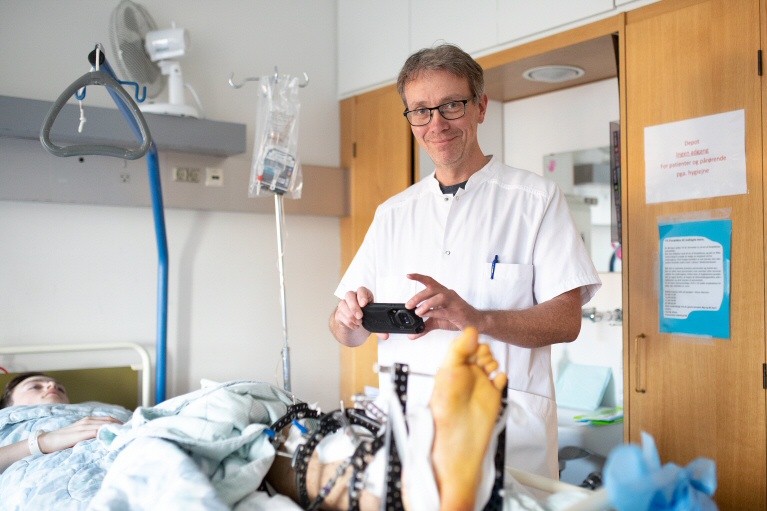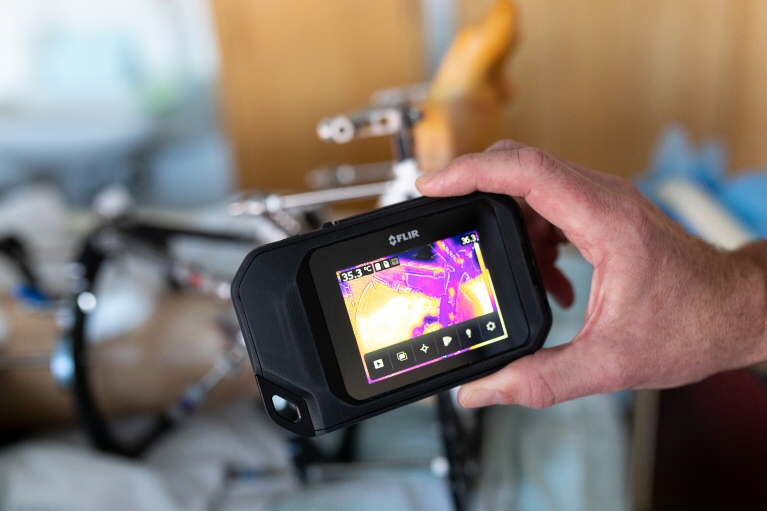Heat sensitive cameras will detect infections
After surgery, both patients and doctors hope to avoid one thing – wound infection. Postoperative infections are troublesome and the prospect of long-term treatment with antibiotics, wound care, reoperation and in a worst case scenario amputation.
It is important to detect the early signs of an infection. When patients are discharged from hospital after surgery, it may be difficult to know if the rehabilitation is as planned.
Maybe a solution is on the way. In a new study, researchers from Department of Orthopaedics, Aalborg University Hospital are testing if postoperative infection can be detected at an early stage by using heat sensitive cameras.
- It is almost impossible for a patient or a primary care nurse to notice the early signs of an infection. We spend many resources on follow-up visits in our outpatient clinic to treat possible infections. By assessing the surgical wound with thermal imaging combined with artificial intelligence we believe, we will be able to detect the infection at a very early stage, explains professor Ole Rahbek.
Orthopaedic patients are equipped with a heat sensitive camera when they leave the hospital and are asked to send daily pictures of the wound to the hospital.
- By use of artificial intelligence, our goal is to develop a system that analysis the thermal image; later, patientsassess of the wound just by taking a picture. As heat sensitive cameras are soon to be integrated in the most advanced smartphones, patients in the future just need to download an app to assess their wound, says Ole Rahbek.
According to the professor, postoperative infections amount to about ½ % of the total hospital budget in Denmark – thus the new technology has the potential to save a substantial amount of money.
Undergoing surgery there is always a risk of postoperative infection. However, early detection is crucial to reduce the costs for society and more importantly that patients avoid infections, prolonging their course of treatment and reduce their chances for returning to an active work life after surgery, says Ole Rahbek.




